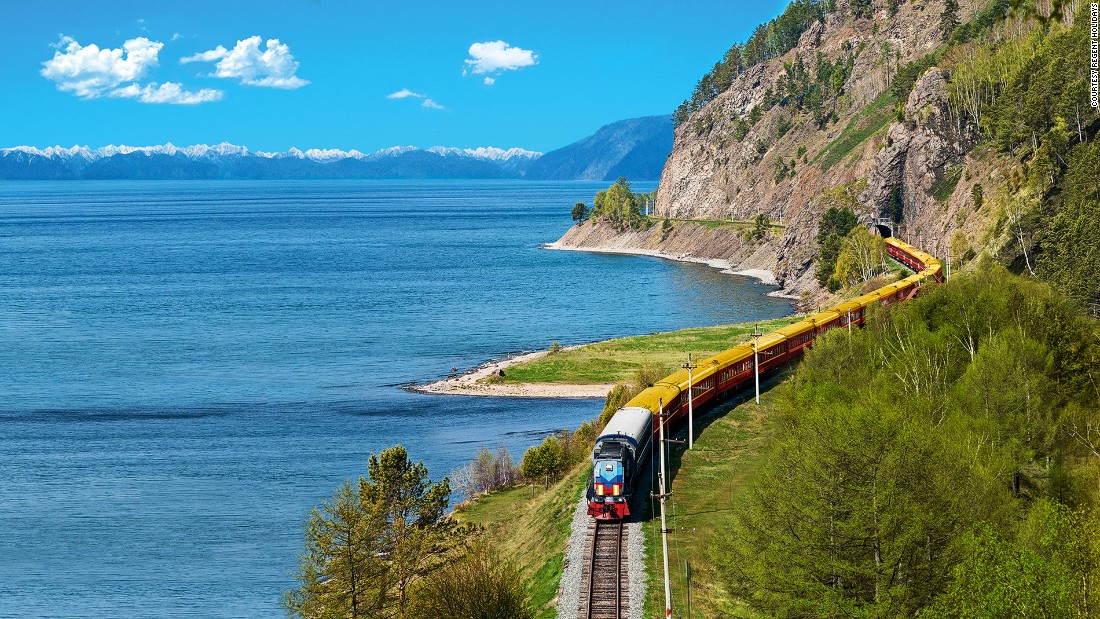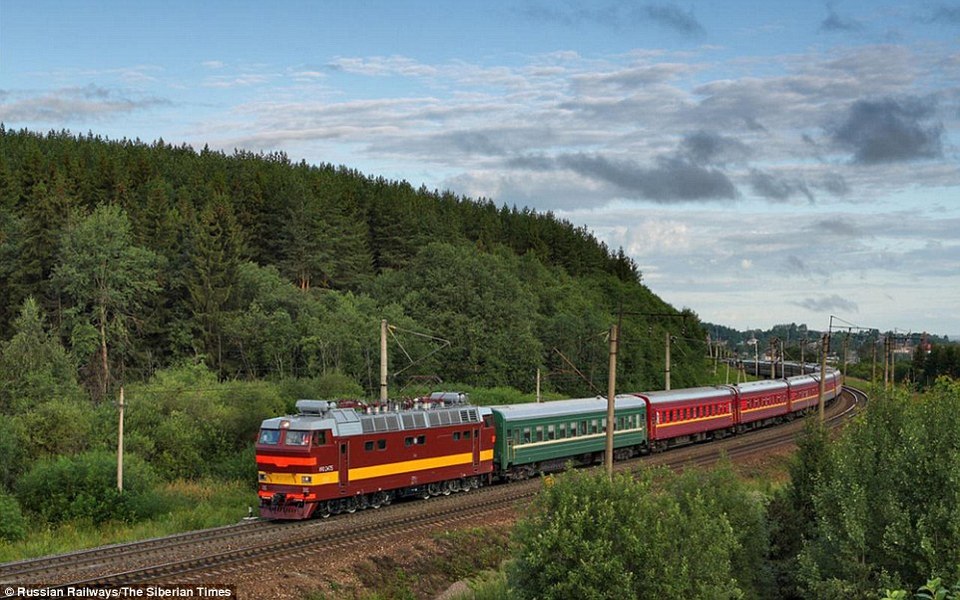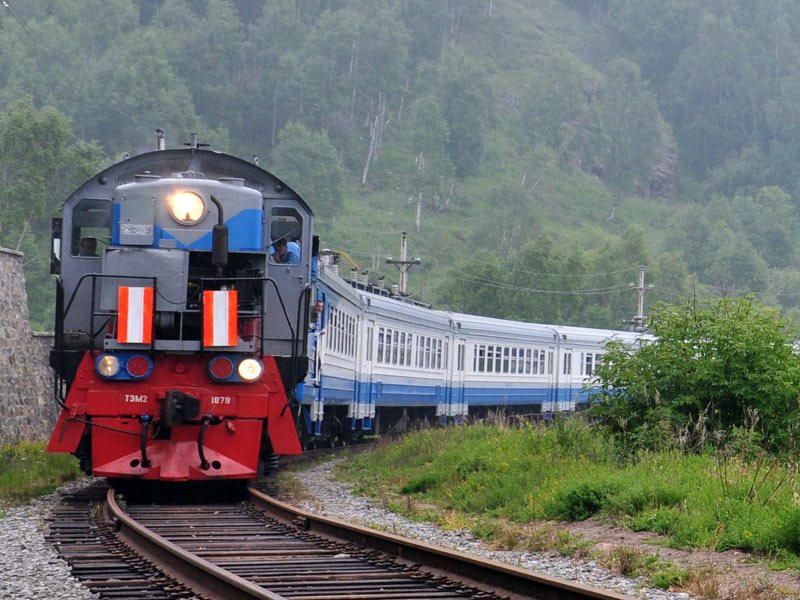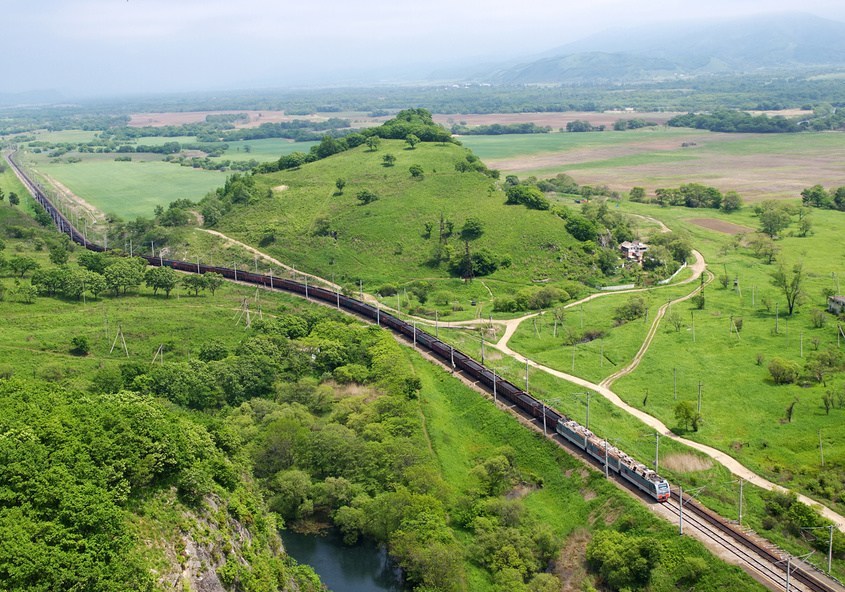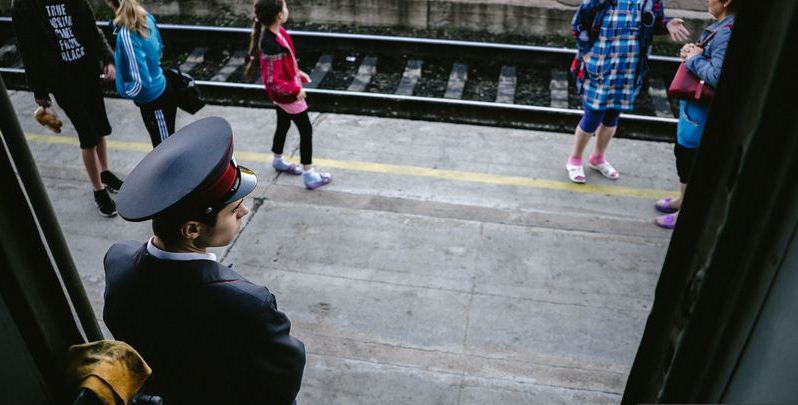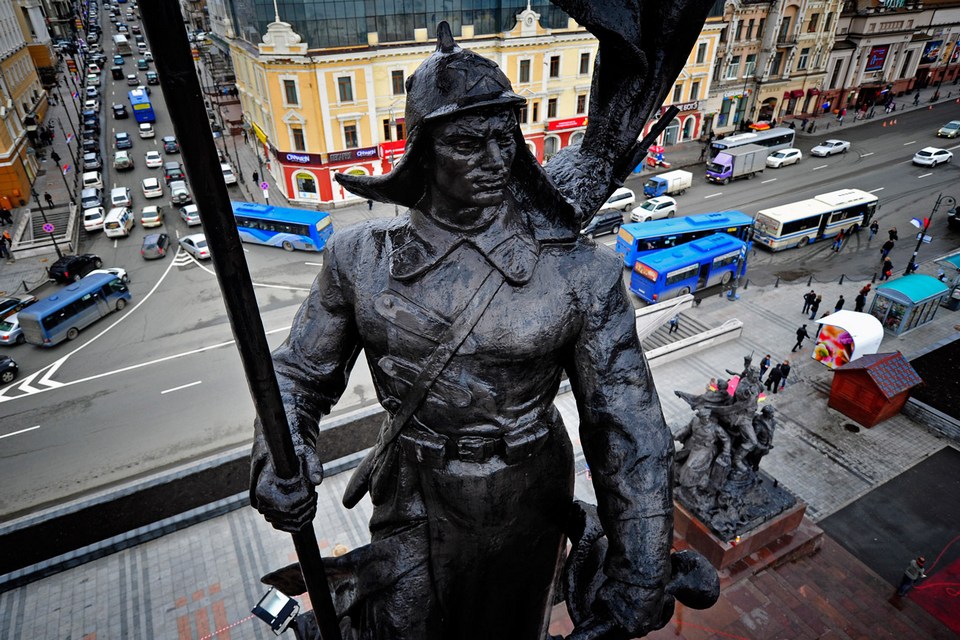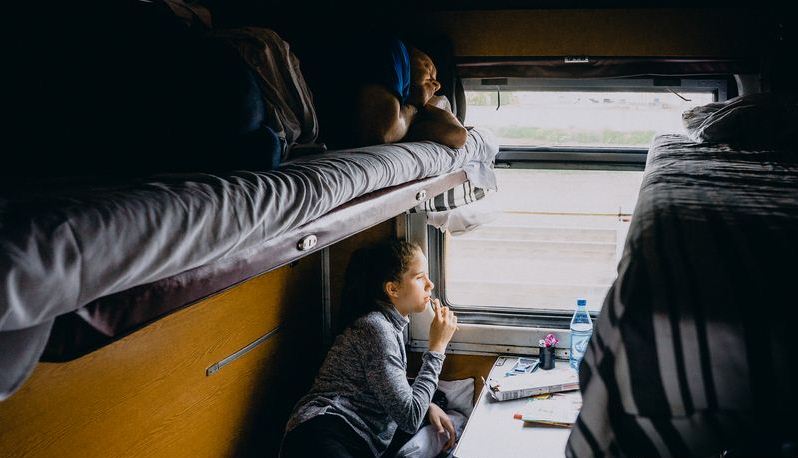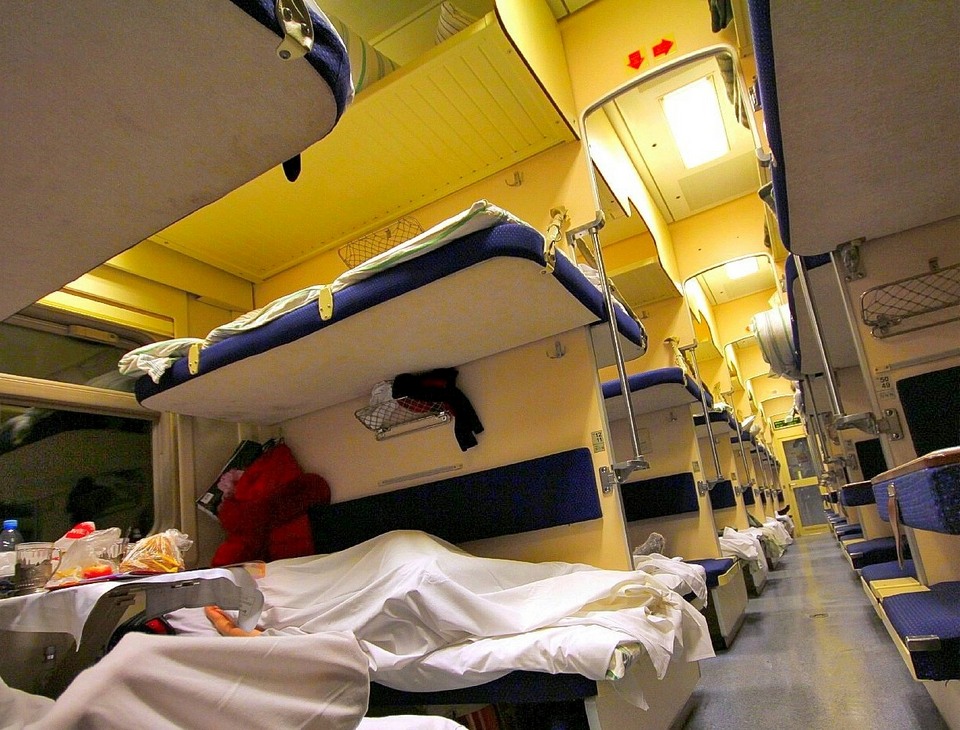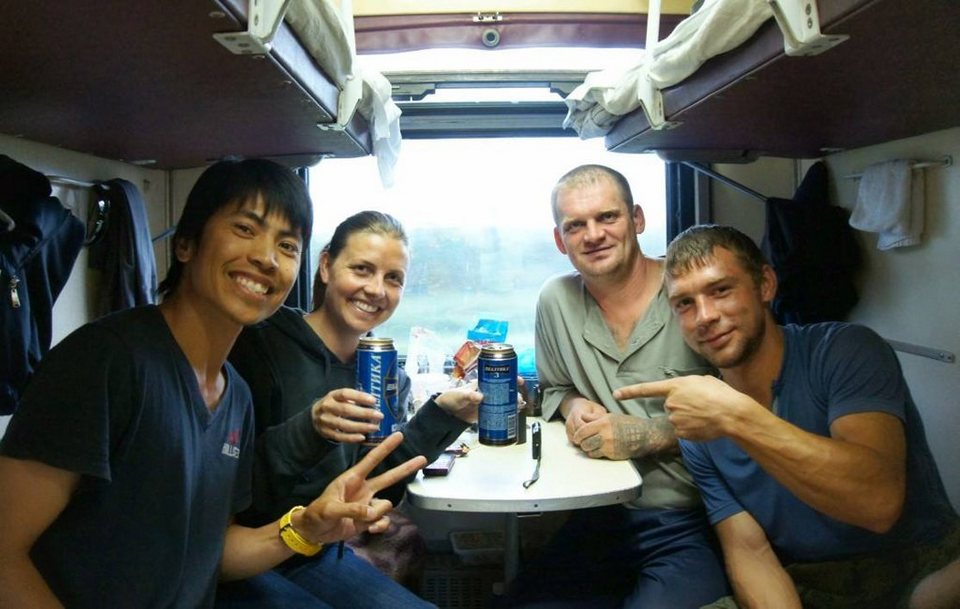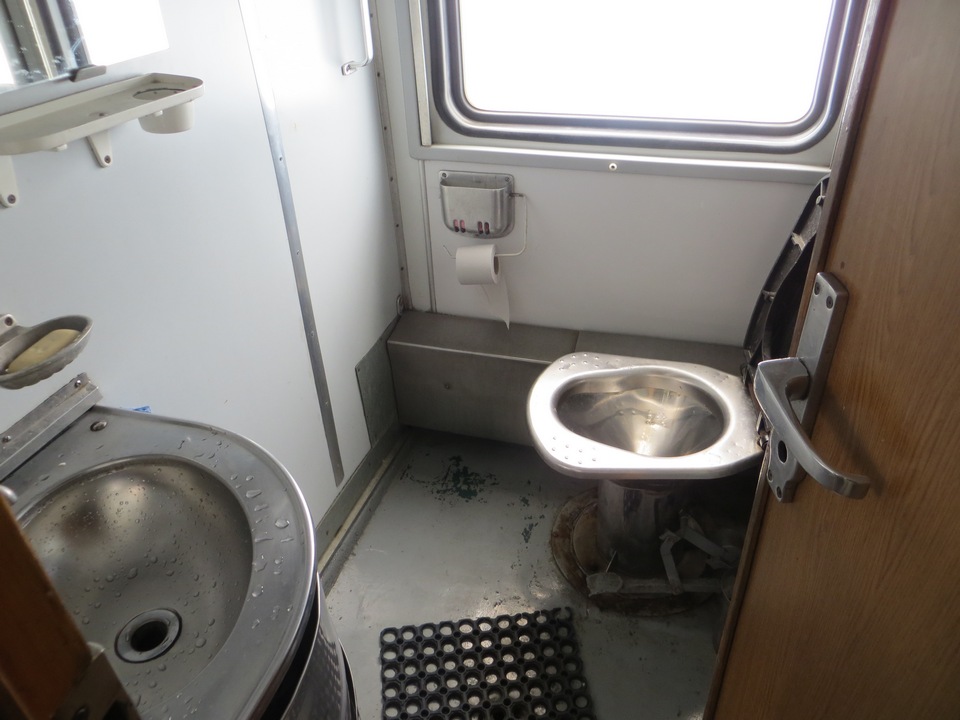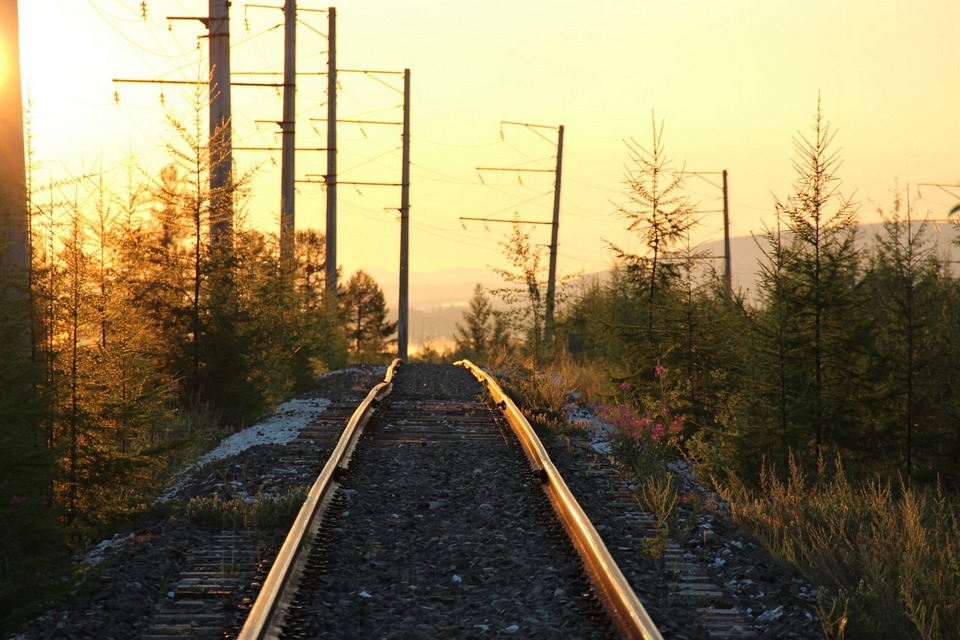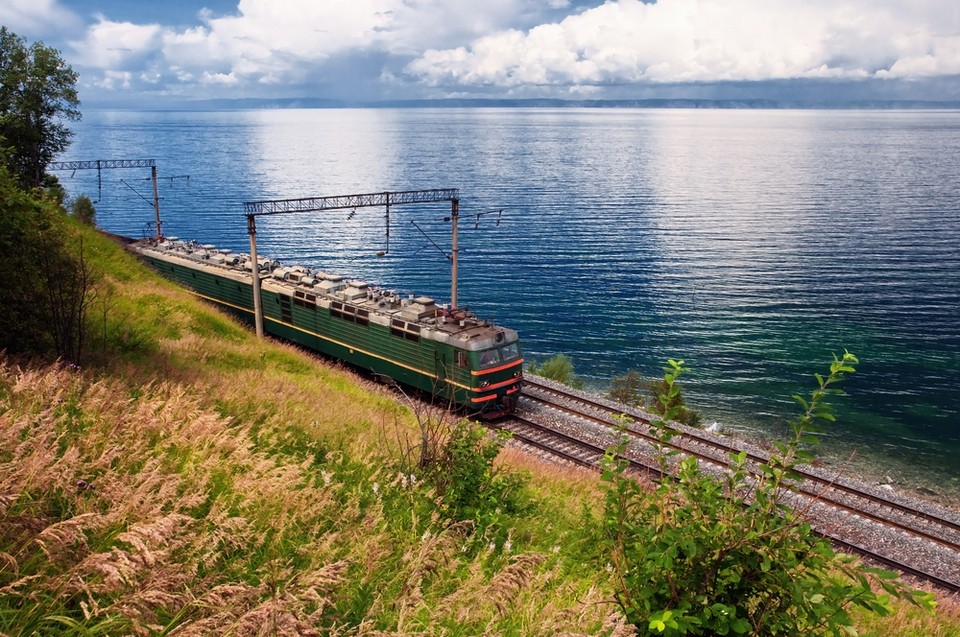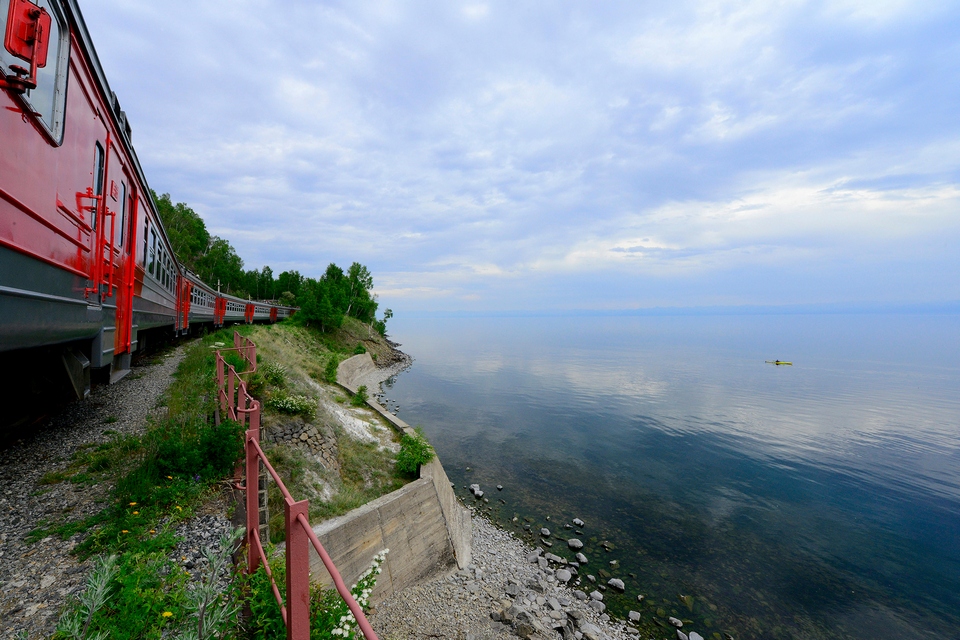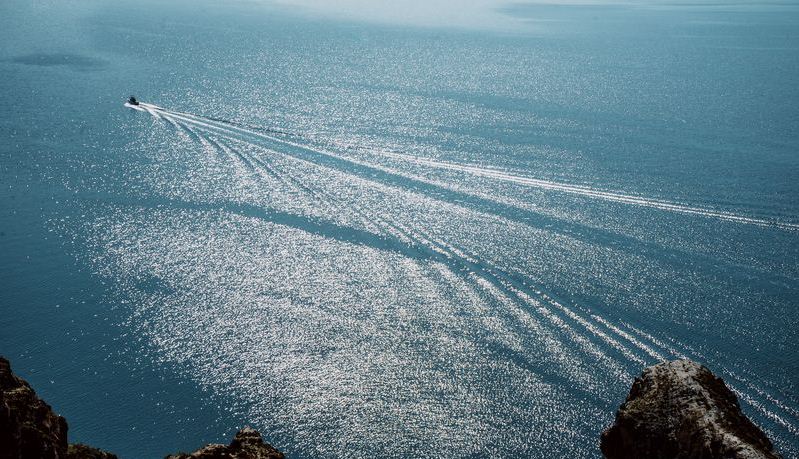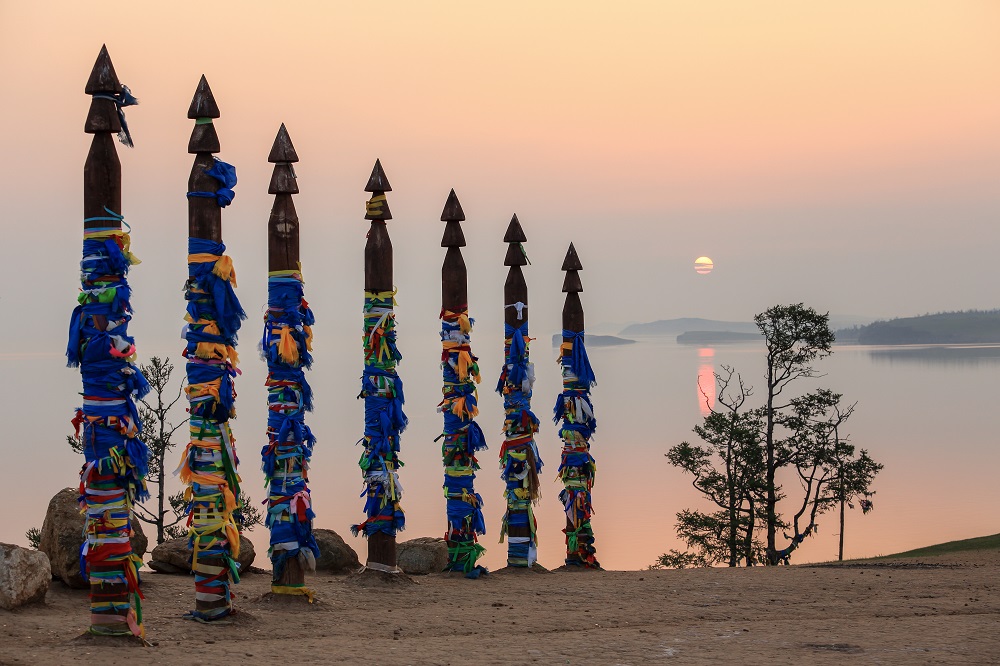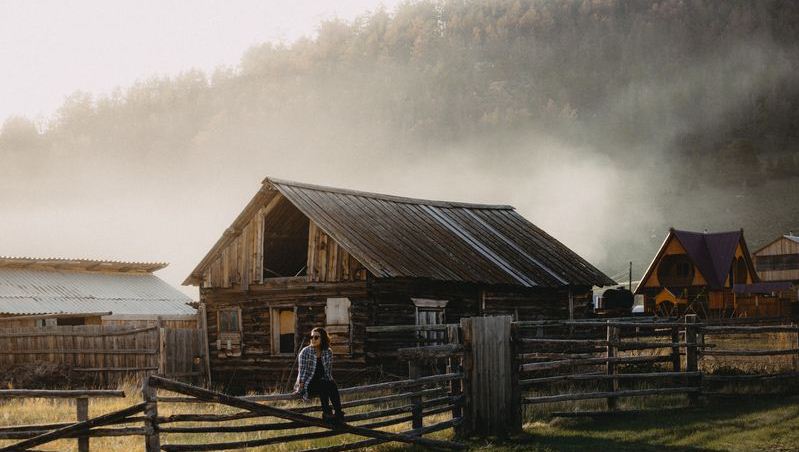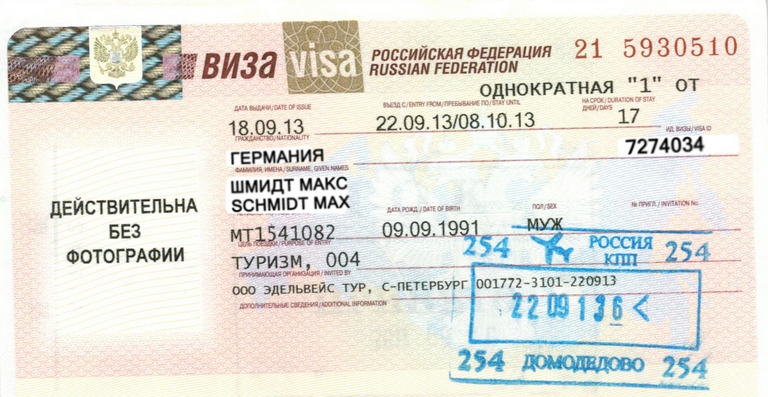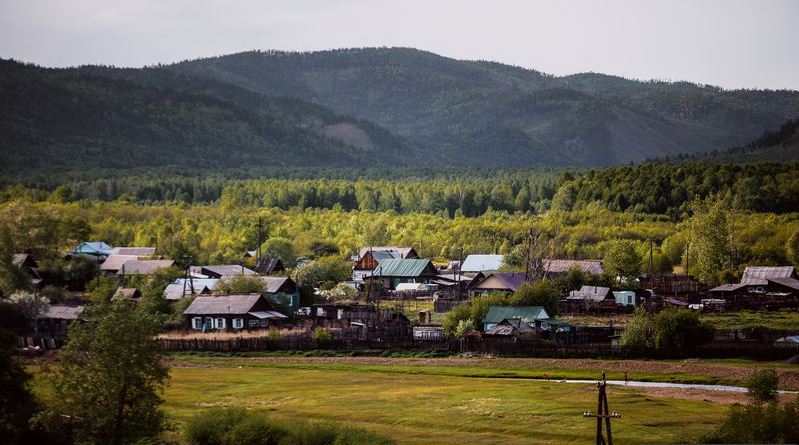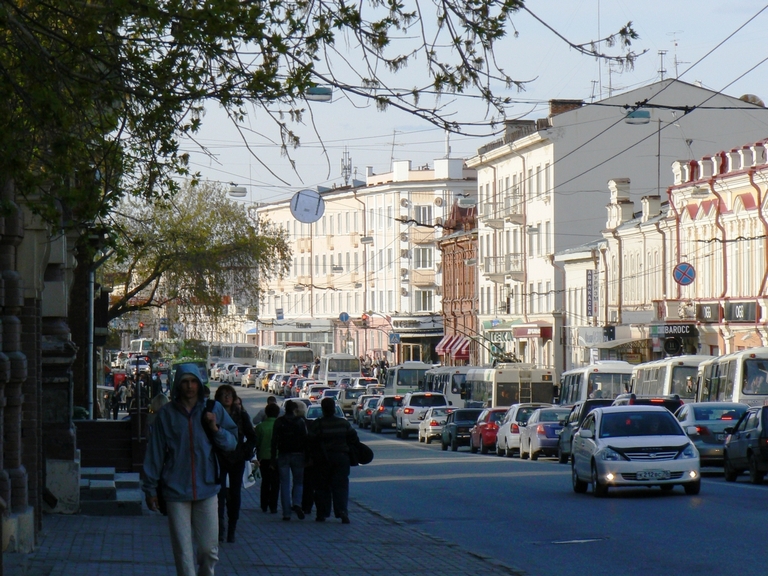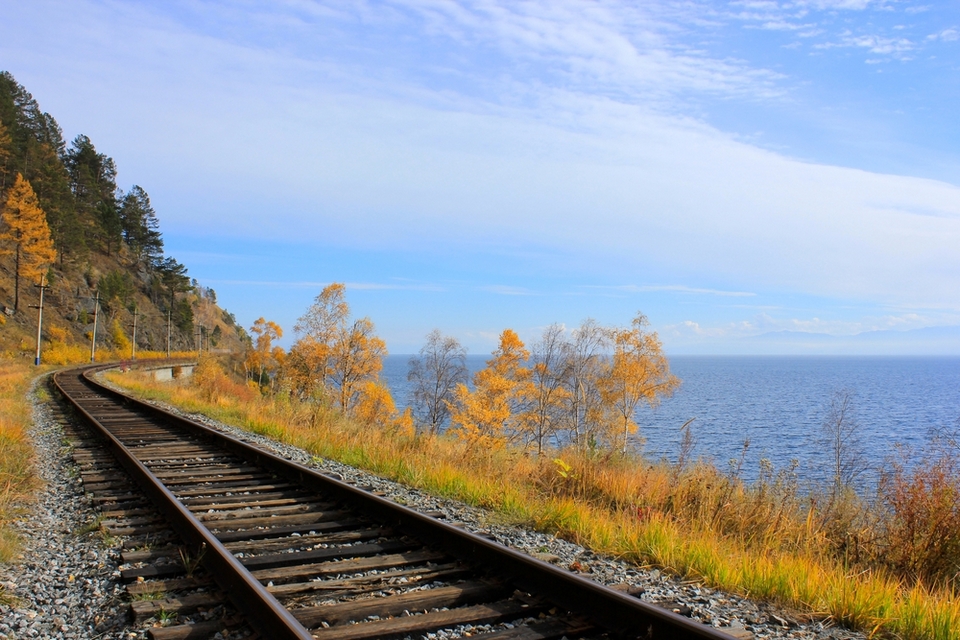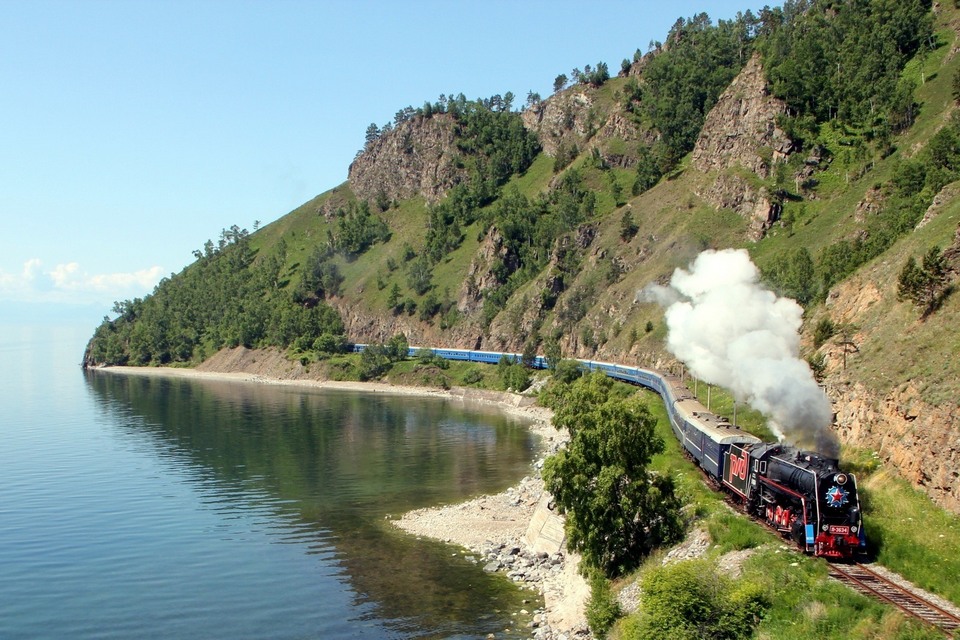Trans-Siberian Railway experience — My wonderful trip around one eighth of the world
The Trans-Siberian Train, which celebrated its 100th-anniversary last year, is without a doubt one of the world’s most magnificent railway excursions. I got to see life on carriages and diverse views off-track at the train’s stops along the route. Let’s go on a Trans-Siberian Railway journey together.
My mother used to tell me a tale about her student days in Albania, when she was assigned to study there. She had to go to the faraway country of Albania by road at the time, travelling via China, Mongolia, and Russia, which was, of course, known at the time as the Soviet Union. For the first time in her life, she boarded a train on a route that was part of the world’s longest railway, the Trans-Siberian Railway. Images of green taiga forests and the massive Baikal lake along that journey remain in her imagination to this day. She also told me about Russian females wearing red boots packed with white snow and huge meadows stretching all the way to the horizon in Mongolia. Though not mine, there were my first memories of the Trans-Siberian railway.
Trans-Siberian Railway: The unique railway
The Trans-Siberian railway is the most impressive railway of the world and boasts numerous remarkable highlights:
+ Russia is the biggest country of the world with a cover area that doubles the USA.
+ The total route of Trans-Siberian is 9,289km running between Moscow and Vladivostok making it one of the world’s longest railways. If you travel non-stop, it will take you about 146 hours that are 6 days and 6 nights to travel through Siberia in Russia.
+ Siberia has more than 30% of all the green trees in the world
+ Baikal lake along the Trans-Siberian route is the world’s deepest, oldest and largest freshwater lake, containing 20% of the world’s total fresh water.
The Trans-Siberian route breaks into three routes after traversing Siberia: the Trans-Siberian Route, the Trans-Mongolian Route, and the Trans-Manchurian Route (China). Because it is exceedingly cold in winter, most travelers take the Trans-Siberian route from May to November.
On the longest route, the Trans-Siberian Route, most of passengers will start from Moscow, which has been seen as a classic route, and then go from the west to the east of Russia to Vladivostok. To make your journey more exciting, plan to get off the train at some stopovers to explore different landscapes because you can stop at any station along the route.
Across 5000km from the East to the West
I made the decision to begin my Trans-Siberian adventure in the opposite direction, from east to west. I had a few reasons for this. First and foremost, I would not complete the trip to Moscow, where I had previously lived for a long time, since I intended to spend my time in places I had never been before. Furthermore, I enjoyed viewing the Trans-Siberian rail as Russians do, thus traveling from east to west seemed more natural to me. Instead of the congested city of Moscow, Vladivostok was the ideal spot to begin my adventure.
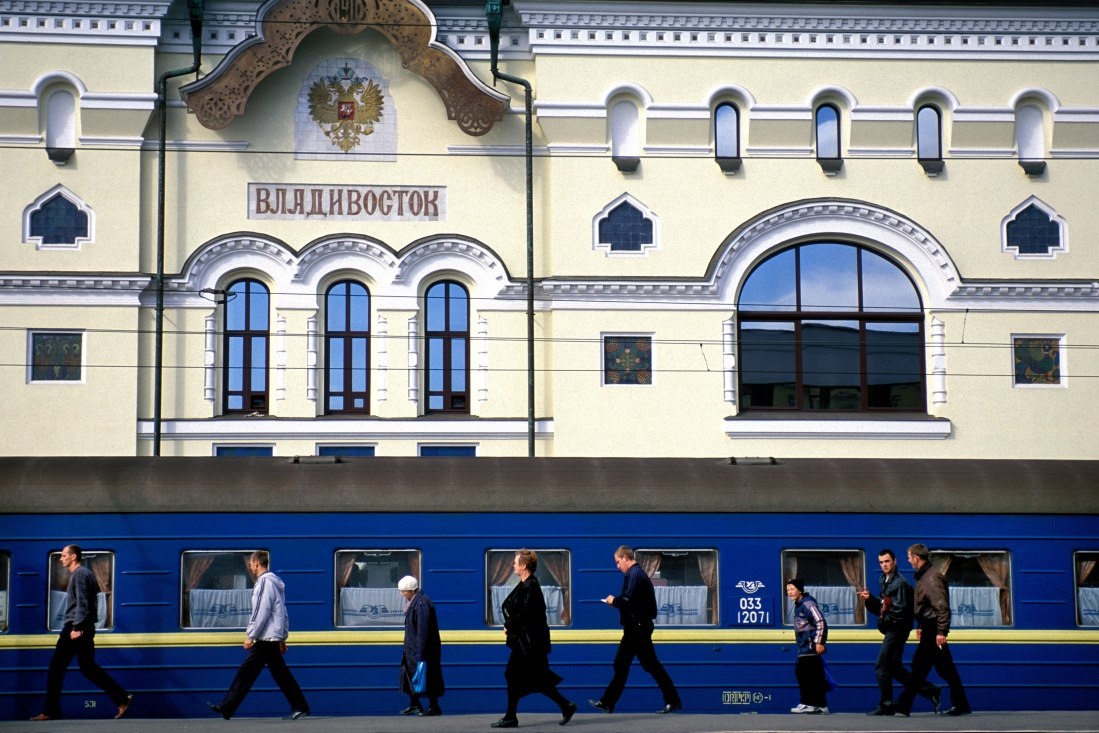
And my journey began…
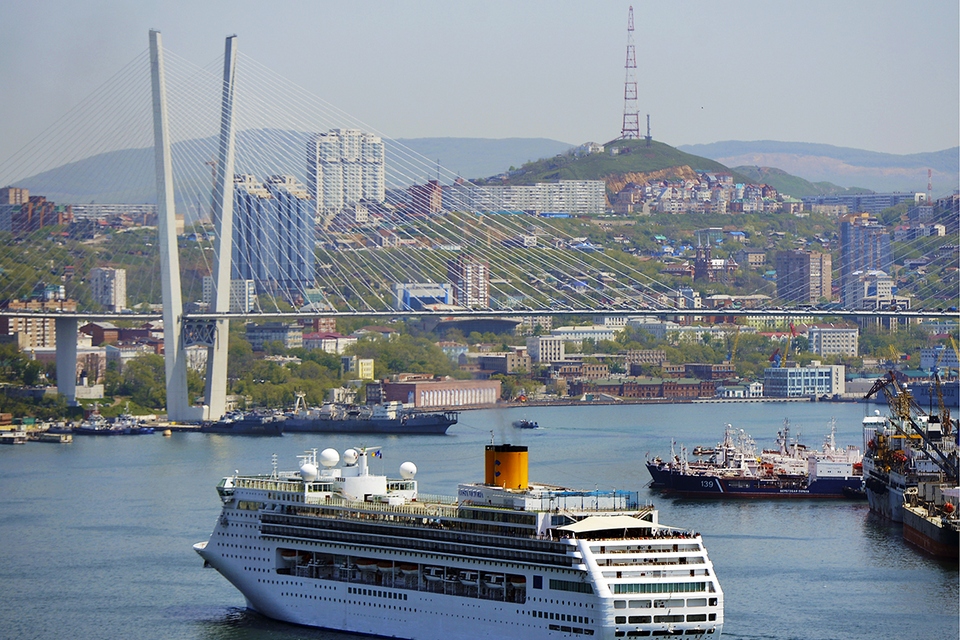
Vladivostok is definitely unlike what you may imagine about Siberia. With its location near the east pole by the Pacific Ocean and featuring a hill terrain, this small city showcases a large number of right-hand drive cars and Japanese electronics. It has both a port and fleet of vessels occupying it. If you go around the city, you will see so many tourists, Korean, Japanese and Chinese traders and Asian locals that you will be able to feel a part of a multi-ethnic Russia when you start your journey from the East.
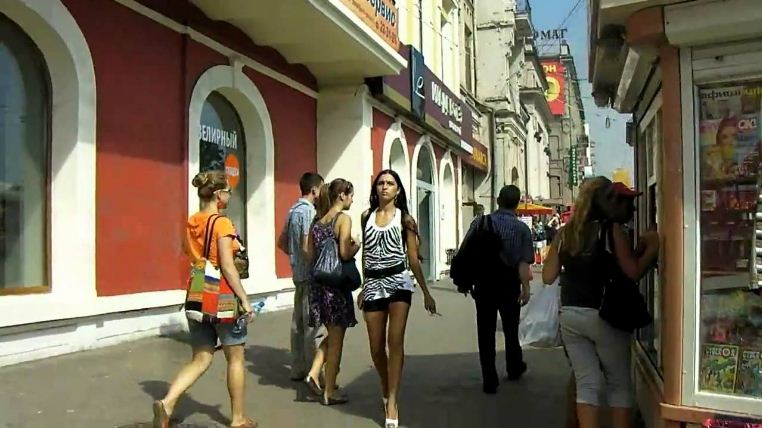
I got on the train at nearly mid-night after two days wandering around the downtown and outskirts of Vladivostok. The train started as scheduled and we passengers started to fall into sleep.
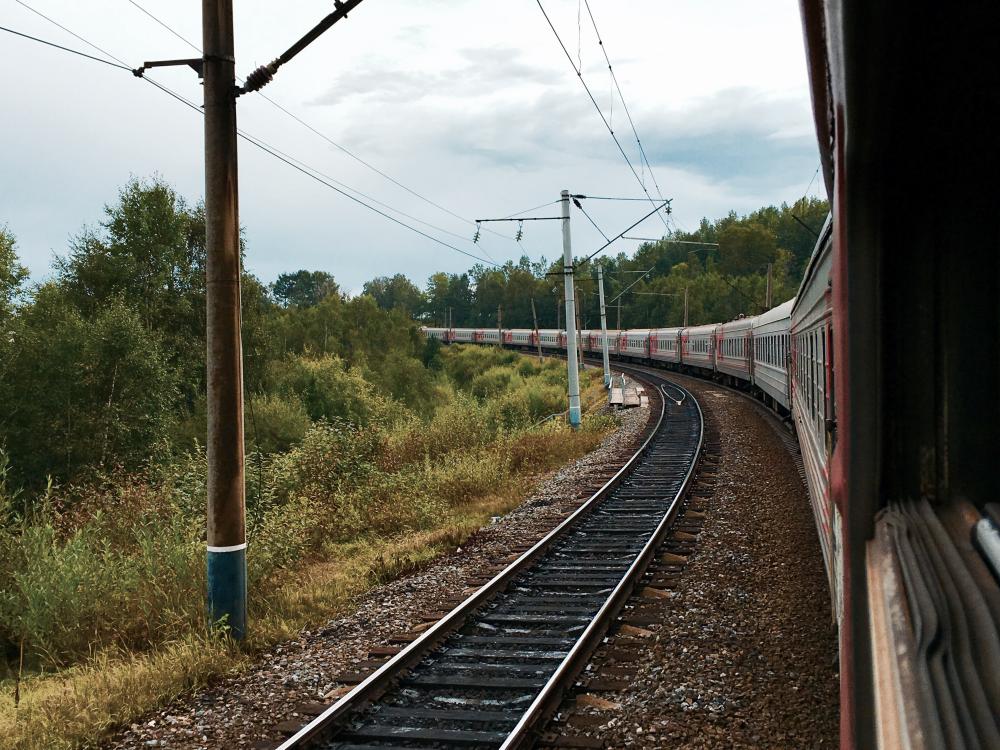
The Trans-Siberian is certainly no tourist train, neither in the past nor now. Tsar Alexander III fully understood the importance of uniting the huge Russian continent when he ordered work on the Trans-Siberian to commence in 1891. Since it linked Russia from the European side to other regions in the east, the new railway would open up vast tracts of mineral-rich land beyond the Urals, provide a convenient way to ship convicts off to Siberia and enable the swift movement of troops to the Amur region which was under increasing threat from the Chinese. This Trans-Siberian railway panorama exhibited at the Paris exposition in 1900 surprised audiences from all over the world.
The train is usually booked solid and provides a vital service for Russians, Mongolians and Chinese who can’t afford a plane or who need to transport large quantities of luggage. Each passenger has a different demand but I always choose the cheapest ticket. It is not for saving money but rather it is the most interesting carriage as it allows one to feel and explore the real life of locals and converse with them.
In the Russian train system, inexpensive and open carriages are called platskart. Each platskart carriage is composed of 40 berths. Passengers on platskart often talk about their stories, games, foods and drinks. Although this shared carriage cannot bring you much privacy, it is where you can experience the most original local culture.
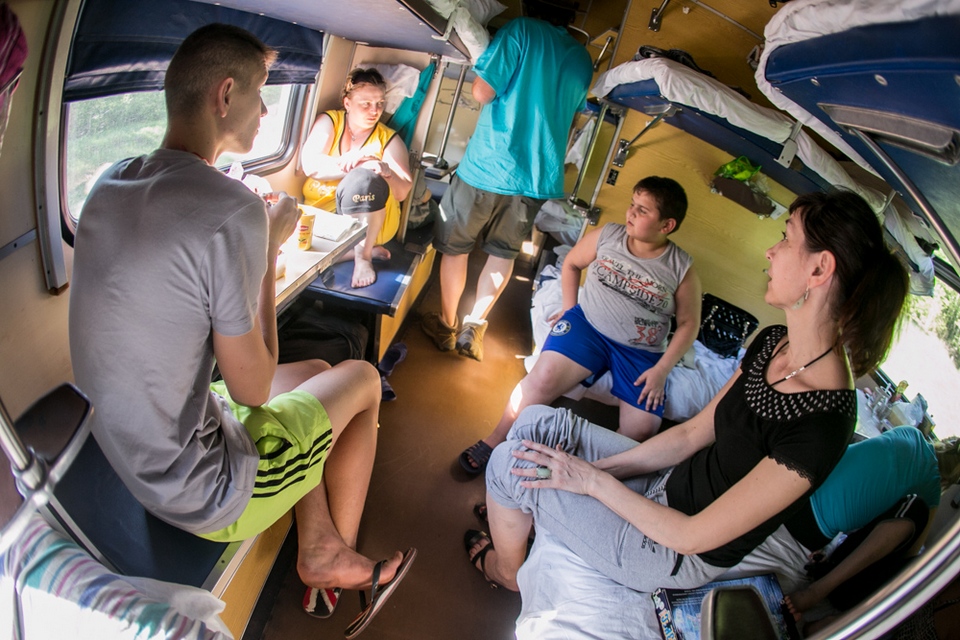
One hundred years ago, when the first through trains started running all the way to Vladivostok, the brochures depicted marble baths, gymnasiums and even a darkroom for developing photographs! The reality was different: breakdowns, no restaurant cars and frequent broken rails. Today the conditions are somewhat better. Although it does not have a bathroom, its restroom is always kept clean even when it is used by a large number of passengers. Each carriage is equipped with a big samovar of boiled water for passengers to make tea or instant noodles. You can buy instant noodles or some snacks, tea and coffee in each carriage. In addition, you can order foods at some carriages with a restaurant. Most of the Russians I met who were using the Trans-Siberian railway were familiar to this means. They often bring foods and other necessities for their journey.

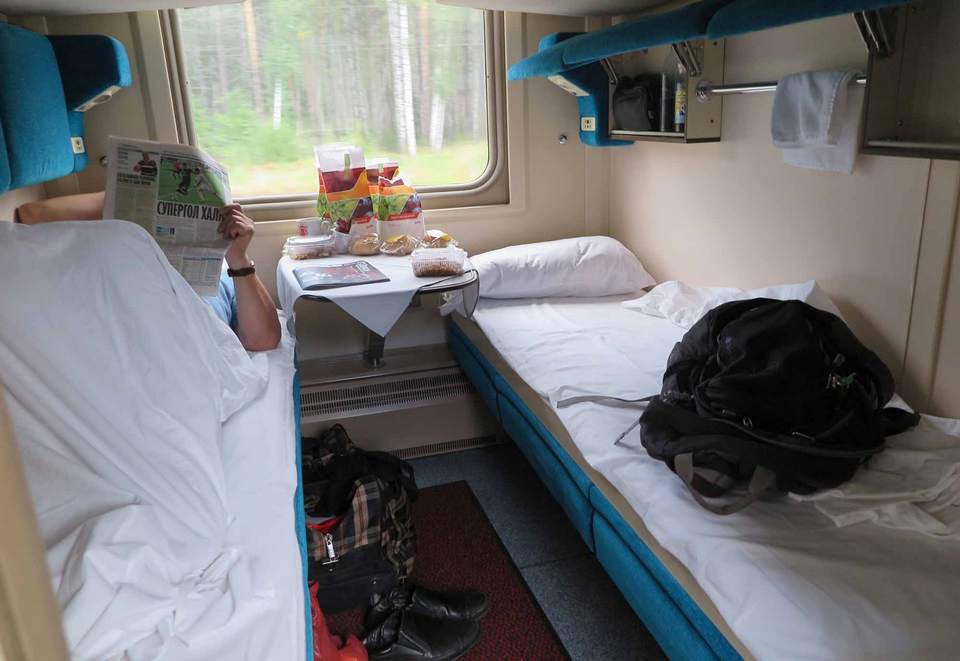
I awoke early because I sensed the darkness was gradually dissipating. It was incredible to be lying on the train and seeing the sun rise through the glass. The world outside had been tinted a pinkish purple tone before becoming orange. The light shone through the heavy dew while clouds floated over the horizon, creating magical scenes. The train made many stops along the way. It would occasionally halt for 10-15-20 minutes, just long enough for us to stroll about and get some snacks from kiosks.
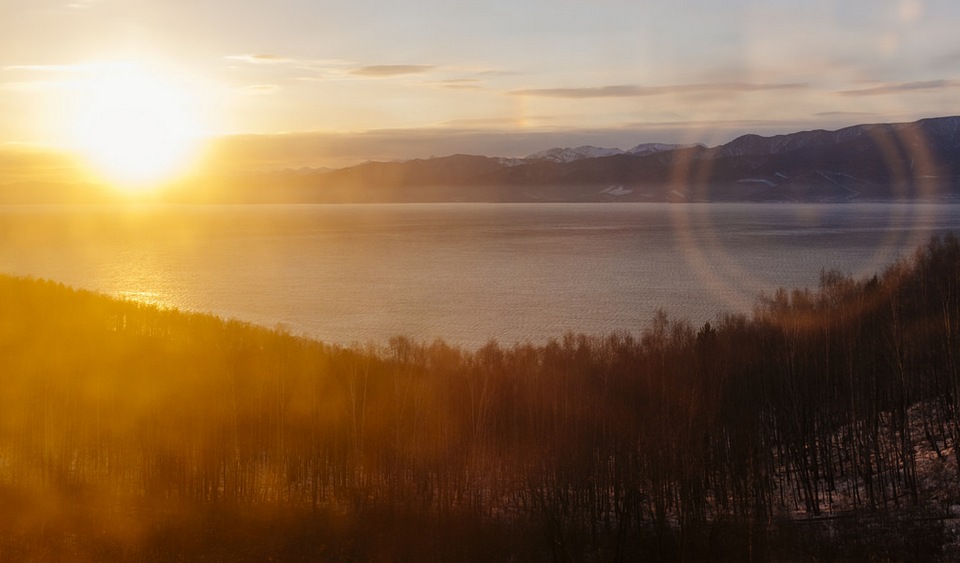
At every stopover of Trans-Siberian, we bumped up against life in the middle of nowhere in Siberia, and then, in an instant, left it behind again.
Impressive picture out of the window
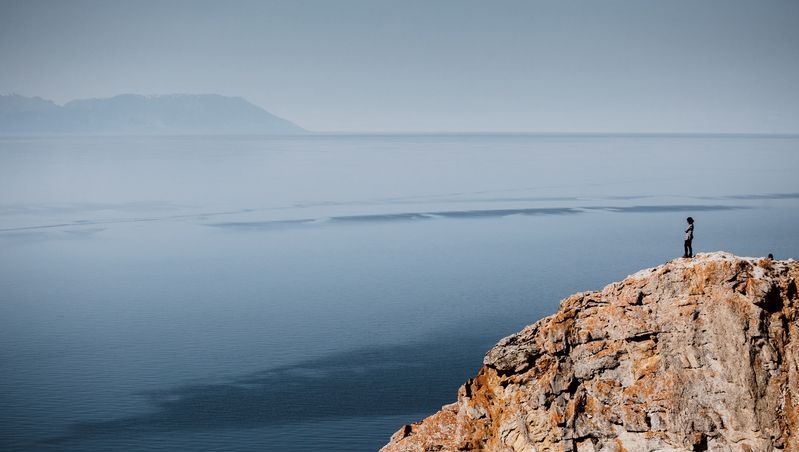
On the other day, I awoke late to find a wonderfully bright day. The brilliant sunlight and the commotion of small children jolted me awake. When I looked around my carriage, I saw that the majority of the passengers here had an average of two children. The youngsters were continuously encircling and talking to me. They would occasionally look at me since they rarely encountered a foreigner who could speak Russian. Surprisingly, these youngsters appeared to be extremely accustomed to boarding the train and to be self-sufficient in terms of associated activities. They certainly did not frighten the other passengers.
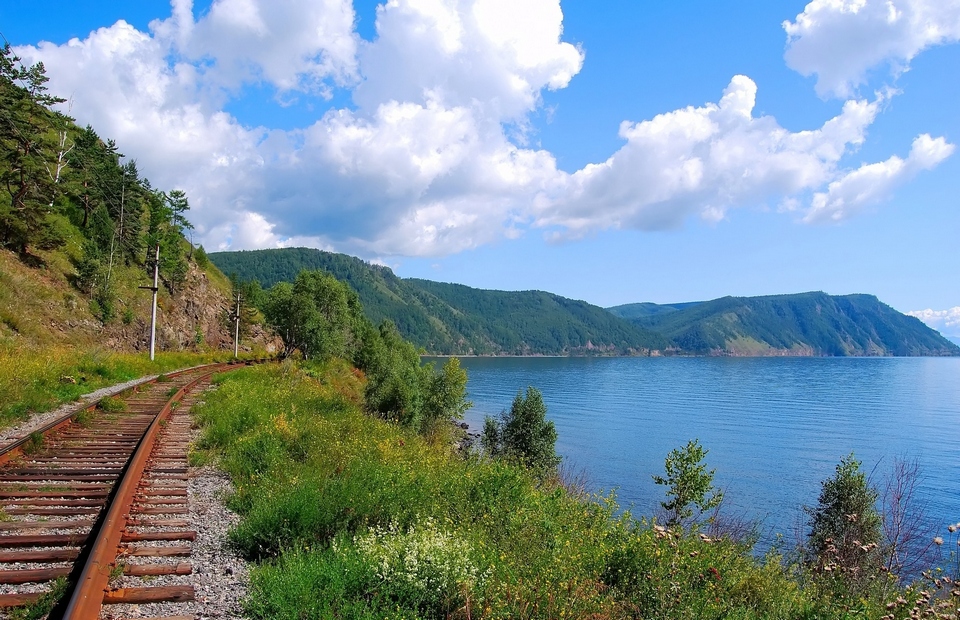
The train rattled along. The view out the window became more and more attractive. We drove across vast meadows, frigid taiga woods, and beautiful birch forests. By the bends of rivers emerged tiny and large villages filled with little wooden cottages, each with a puff of smoke flowing up from the chimney like something out of a fairy tale along the beautiful green rolling hills. In addition, several wild flora bloomed in Siberia’s mild summer. It felt as if you were witnessing a slow-motion movie.
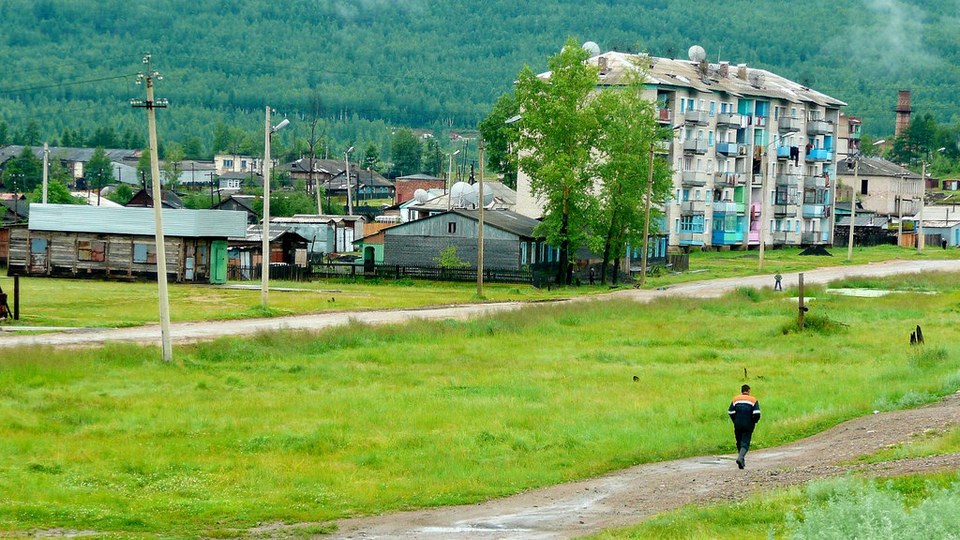
On the Trans-Siberian railway, I completely lost track of time. When you got up each day, I would wonder, “Where am I, and what time is it now?” Almost every day, you rapidly change the time on your smartphone, watch, or video recording device! Yes, I was on the world’s longest train journey, and we had spanned seven time zones over the width of the world’s largest country, which spans ten time zones. It appeared to be insane yet fantastic!
Indulge in Baikal lake – the gem of Siberia
To make things easier, all Trans-Siberian trains run on Moscow time. I arrived at my first stop, Ulan-Ude, the capital city of the Russian Republic of Buryatia, after over three days and 62 hours of travel. My hair appeared to have turned to straw after several days of not being cleaned at this point.
Ulan-Ude is well-known for its huge and unique monument of Vladimir Lenin’s head in the center plaza, which is the biggest in the world. The Republic of Buryatia is similar to a miniature Mongolia, with locals sharing Mongolian culture and blood, lush grasslands spreading across numerous hills, and courageous wild horses enhancing the landscape. This is also Russia’s Shamanism and Buddhism hub, with several Tibetan Buddhist stupas and pagodas.
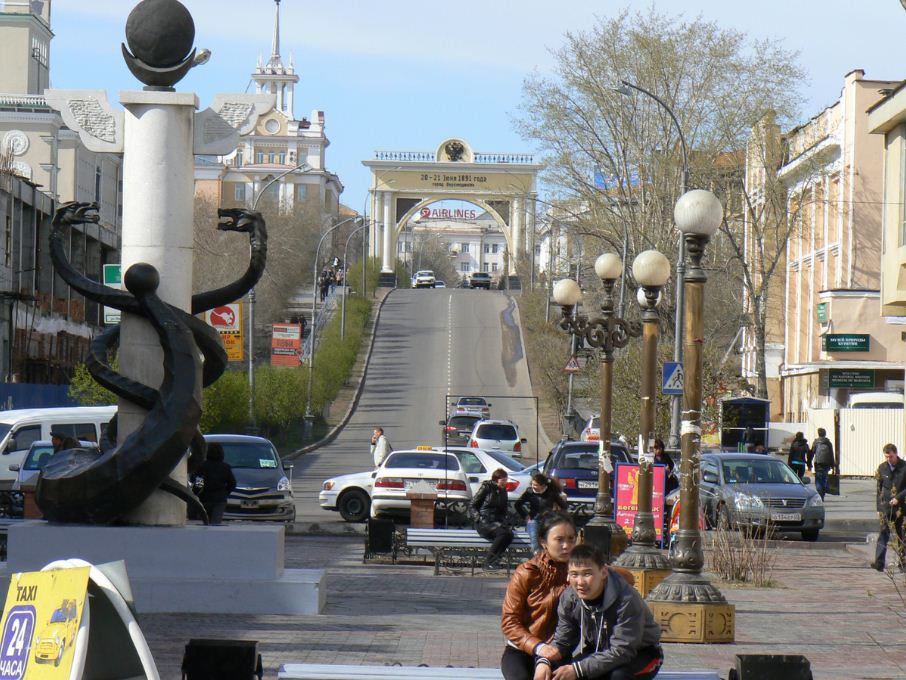
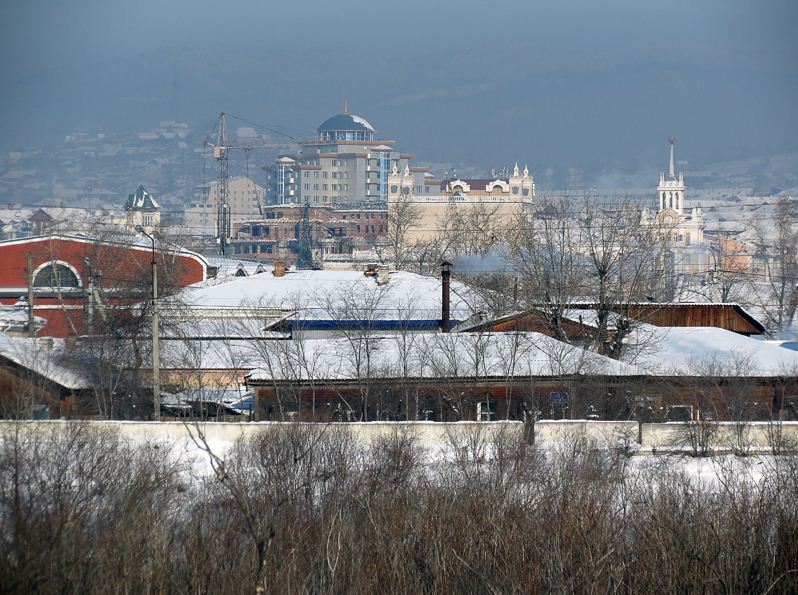
After bidding farewell to Ulan-Ude and its surrounding towns, I carried on to Irkutsk, the railway’s most significant stoppage. Ulan-Ude is 448 kilometers away from Irkutsk. The most exciting experience for passengers in this section is the opportunity to see Baikal Lake via the vehicle windows. The railway took a long route around the lake’s southern bank. Because Baikal Lake is so big, it takes a few hours to complete this part of the journey, and I felt like I was traveling along the beach for the majority of the time.
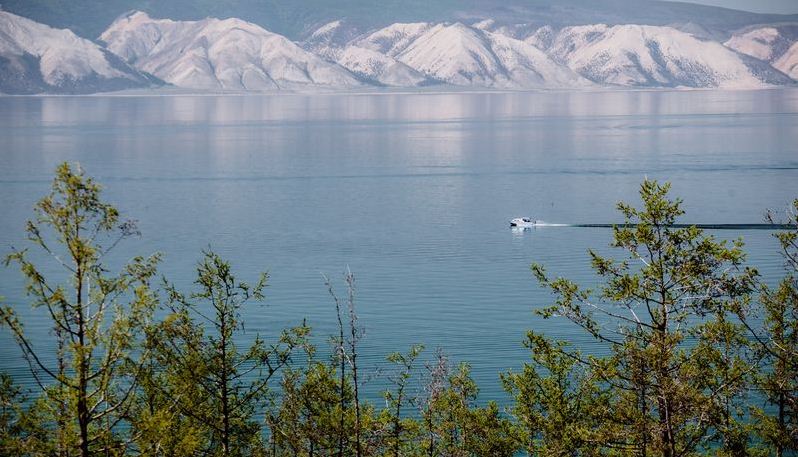
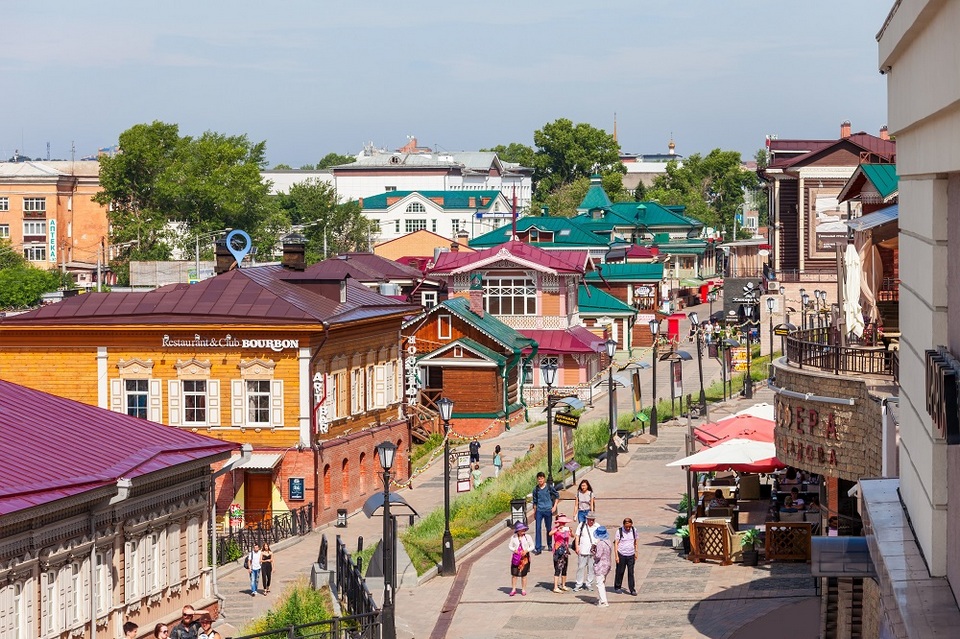
I paused in Irkutsk to drive to Olkhon, the world’s fourth-largest lake-bound island, to see Baikal Lake. To visualize the island, envision a location with a bigger land area than Singapore in the center of Baikal Lake. I set up a tent to spend the night beneath the cliff beside the lake in order to see the sunrise the next morning. I bathed my face in the cold and clear water of the lake, surrounded by the sound of waves and birds chirping to welcome a new day. The water in the lake is so clean that you may drink it without boiling or filtering it.
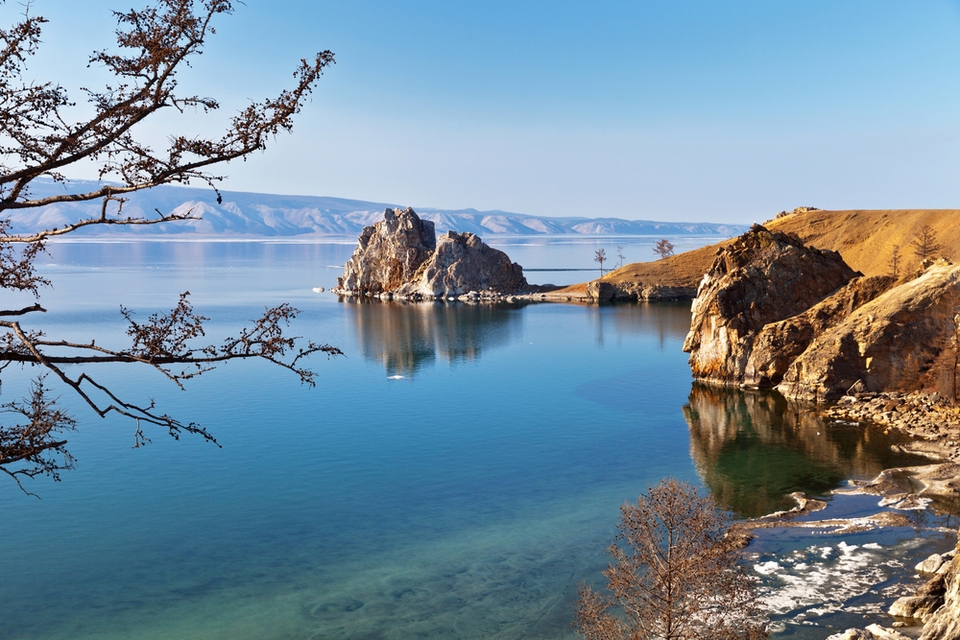


Olkhon is like a little version of Siberia to me. The island is adorned with taiga primeval woods that give habitat for wild animals, expansive green grasslands reminiscent of Mongolia, and sand dunes reminiscent of deserts or cliffs against the infinite blue backdrop of Baikal Lake.
Last leg of the journey
My Trans-Siberian adventure ended at Novosibirsk, roughly 1,855 kilometers from Irkutsk and a day and a half by train. This was Russia’s third largest city and Siberia’s greatest hub of research and industry. To continue my lengthy journey, I had to catch another train from here to the south of Siberia.
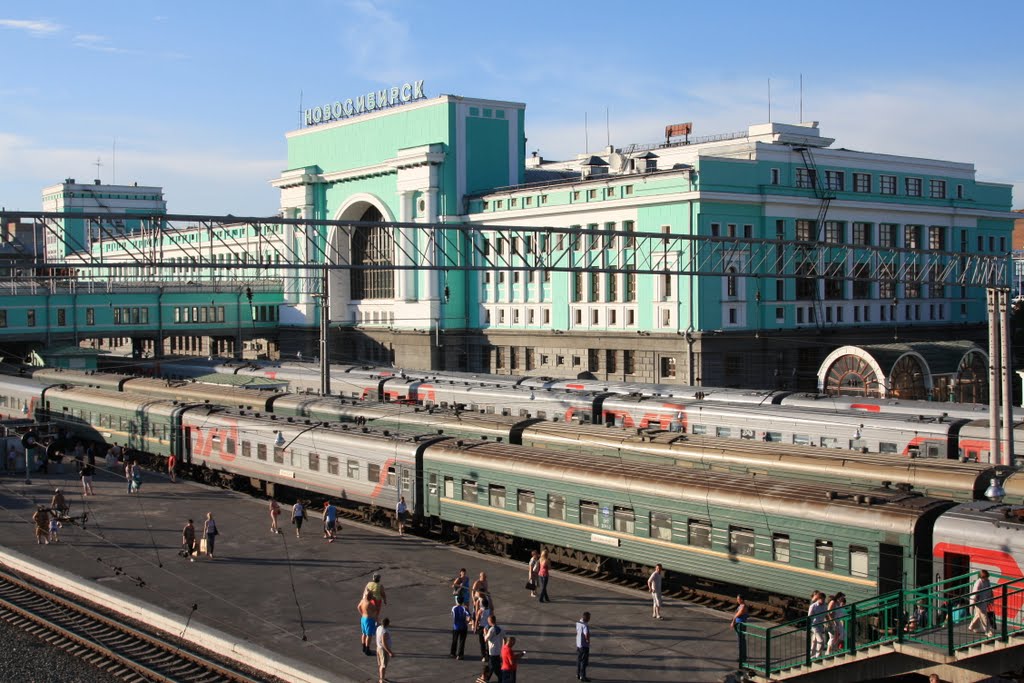
Siberia seems so huge to me that I will never be able to explore it all in my life. On the Trans-Siberian train, you’ll notice that Siberia isn’t all about taiga woods and freezing temperatures, as you would expect. I believe that everybody who boards this never-ending train will find their own Siberia.
Trains rumbling across Siberian untamed areas have been operating day and night along important lines connecting the east and west for more than a century to meet Russians’ transportation needs.
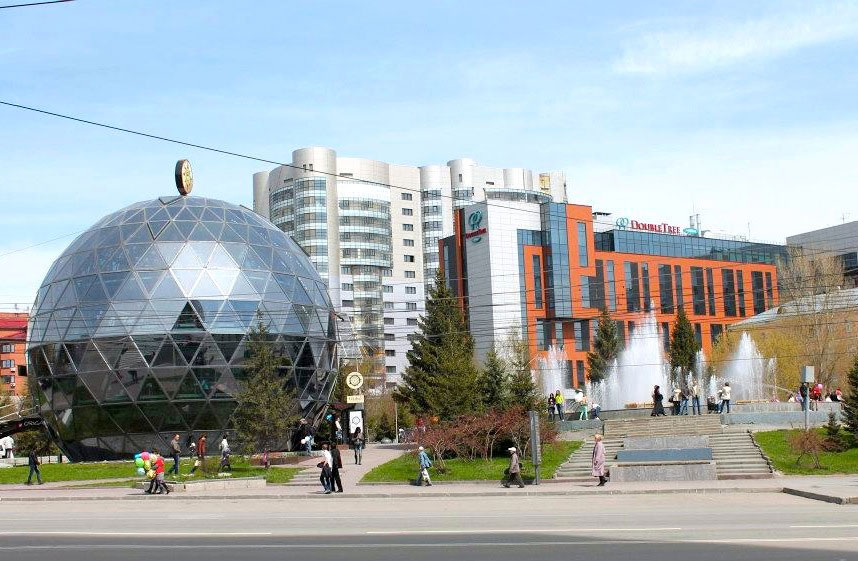
Further information
Visa
It is not difficult to obtain a visa to Russia, although it may take longer than usual. You must submit all papers at least a month before your trip since they will approve them within 20 working days. An Invitation Letter (done by a Russian agent for $50/person), schedule, ticket booking, lodging, and standard insurance are all required documents to be submitted to the consulate. Finance-related documents are not necessarily necessary for visas to Western European nations. Tourist visas are typically good for one month.
If you are traveling in a group, it is best to phone the embassy and make a reservation. If not, you should leave as soon as possible. Because it is not difficult to get accepted, you can go to the bank to transfer the visa fee before submitting your application. You will save time as a result of this. Following that, your paperwork will be processed.
Transportation
+ Air tickets: You should plan your journey early to book air tickets in advanced. Sometimes, Vietnam Airlines and Aeroflot offer cheap prices at $500-$600 for return tickets between Hanoi and Moscow. Return tickets between Hanoi and Vladivostok are about $500/ticket offered by S7 airlines.
+ Train tickets: You should book train tickets as early as possible, especially in the high season. You can visit www.rzd.ru to book online. Because it is a Russian website, you should know Russian or ask someone who can speak Russian to help booking. You can also book tickets at tourist agents or middle websites with an extra service charge. In addition, you can buy tickets directly at the train station in Russia, but you will have less chance to get a good seat.
+ Moscow – Vladivostok train tickets will range from $1,130/ticket for the first kupe class (two berths) and $480/ticket for the second kupe class (four berths) and $265/ticket for platskart class.
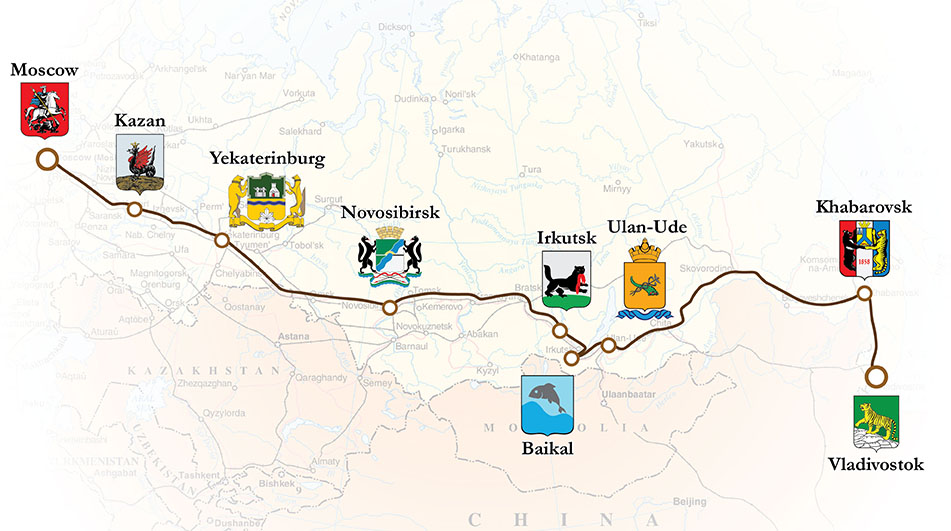
Accommodation
Aside from sleeping on the train, you may rent a room at one of Russia’s cities’ hostels, homestays, or well-appointed hotels. Except in isolated locations, room costs are displayed on international booking pages. Russians frequently book accommodations using websites such as Booking.com. Following the economic crisis, Russia’s lodging prices fell, providing travelers with a plethora of new alternatives. Each double room is frequently offered starting at $20 per night.
Cost
Average expense: In addition to train and air tickets, the average expense of every visitor ranges about $30-50/day.
Best time to travel
The best time to travel here is from May to September. During the winter, the temperate may be -40 degree Celcius. However, some tourists prefer going this time to witness the beauty of frozen Baikal lake.
Where to stop?
Irkutsk city and then Baikal lake are must-see sights. Depending on your time and demand, you can stop at other big cities along the way and then go to off-track destinations if you like.
What to bring?
+ You should prepare before the journey or buy along the route some snacks such as cheese, biscuits, instant noodles, fruits, tea and coffee bags. Vodka is not sold at stations but Russian passengers will know where to buy it!
+ For your hygiene, you are advised to bring wet tissues, a small cup and bath towel because they are not available on trains,there are only bath tubs and flush toilet. Bathrooms are only available on the first class carriages of the Trans-Mongolian Express.
+ Bring a book, iPad or any device that can help to fill up your free hours on the train.
+ It’s wise to prepare cash because you can’t use your credit card everywhere, for instant, buying foods at roadside kiosks.
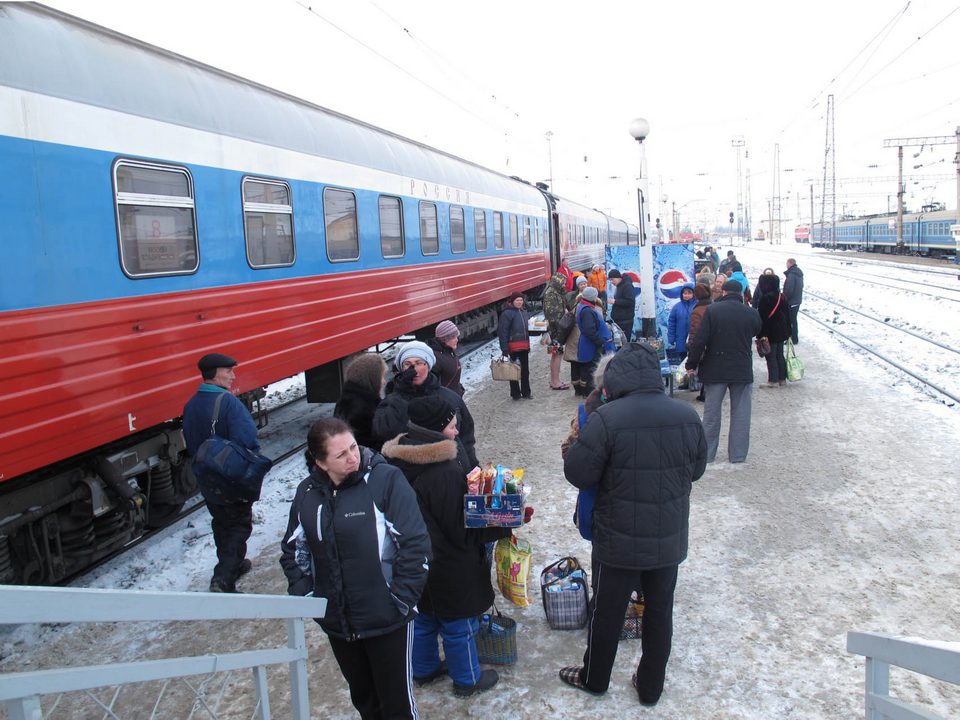
Special notice
Before you get off the train at stopovers, you should ask about the break duration at that station. The train will not wait for you before it continues the journey. There are always some tourists left behind.
